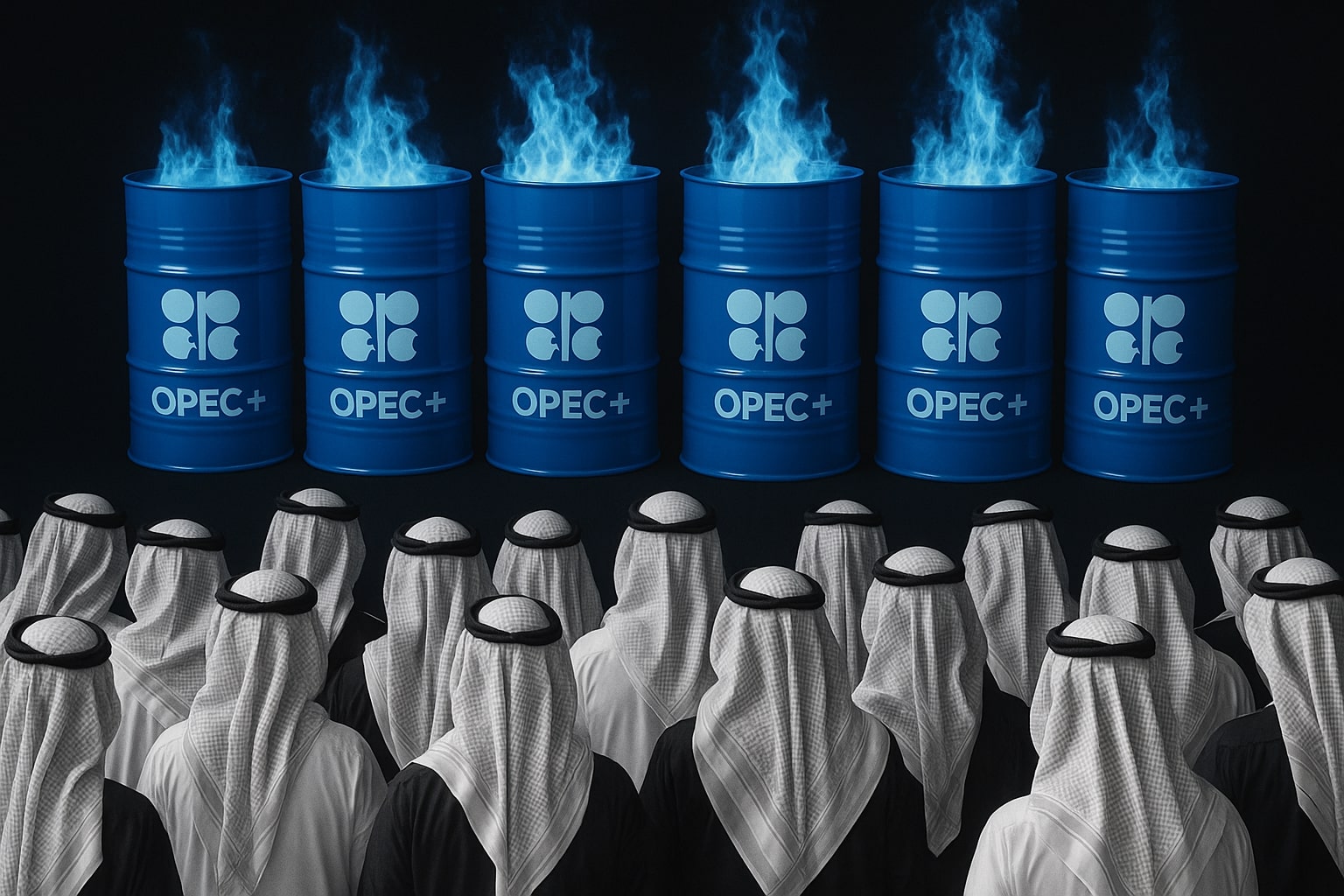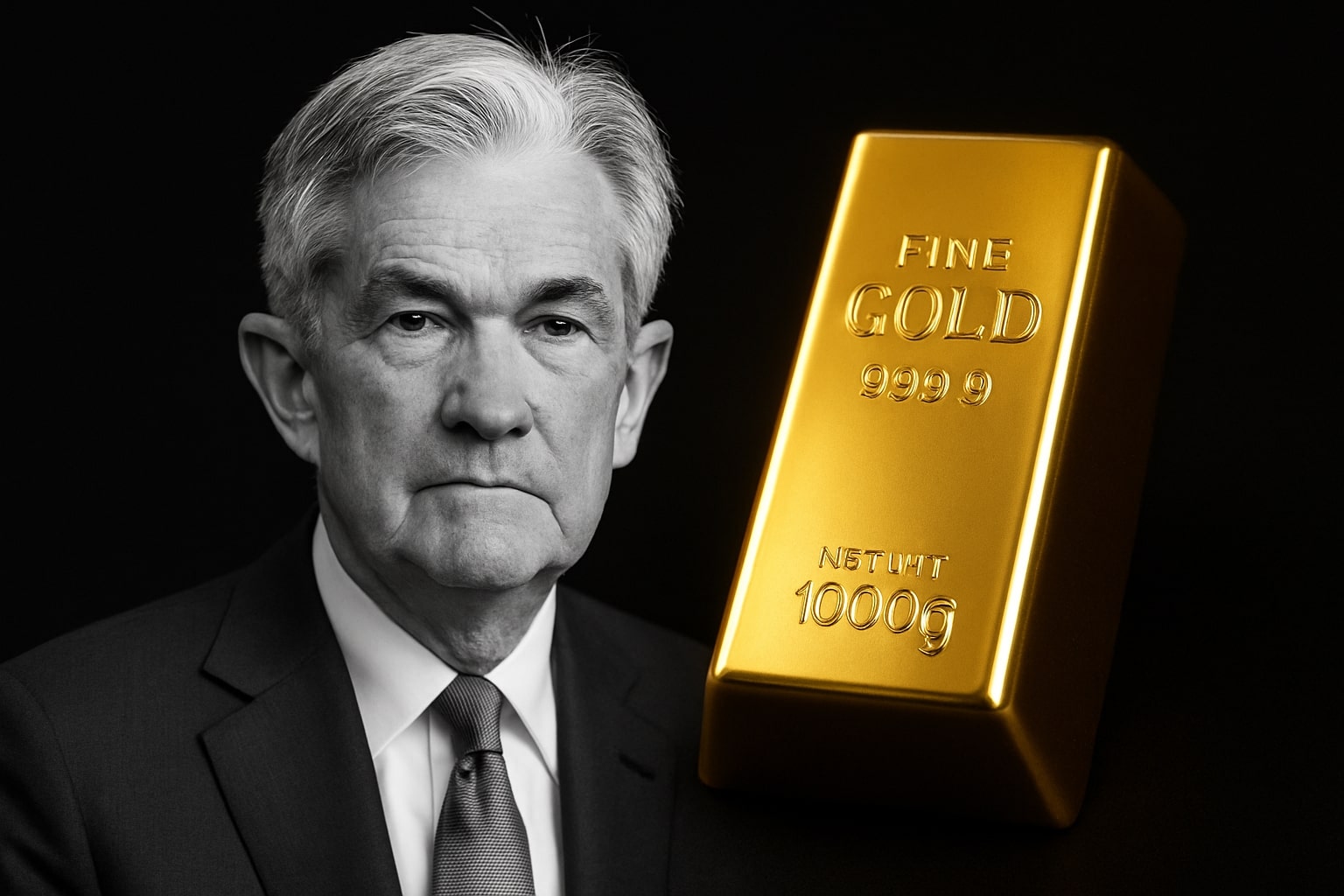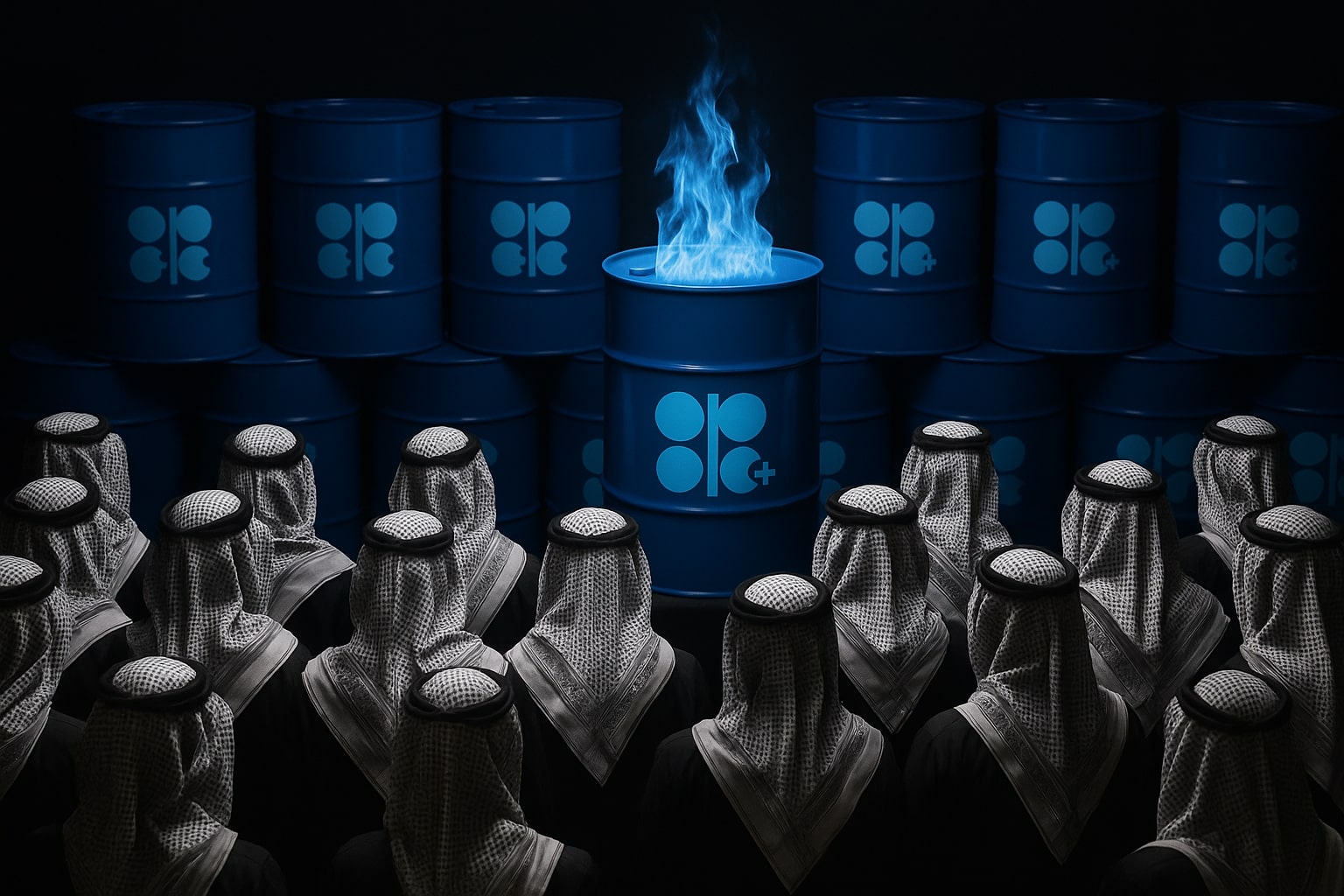
Oil Price Forecast - Oil Prices Fall Sharply; WTI at $58.97, Brent at $63.01 as OPEC Forecast Sparks Bearish Turn
OPEC’s outlook for a balanced 2026 market, strong U.S. dollar, and surprise inventory build push WTI and Brent lower amid global demand concerns | That's TradingNEWS
Crude Oil (WTI: CL=F, Brent: BZ=F) Drops Sharply as OPEC’s 2026 Balance Forecast and Rising Inventories Weigh on Market Sentiment
Oil markets turned decisively lower on November 12, 2025, as traders reacted to a combination of bearish supply projections, stronger U.S. dollar, and surprise inventory builds. West Texas Intermediate (WTI) fell 3.39% to $58.97 per barrel, its lowest close since early September, while Brent crude slipped 3.3% to $63.01, reversing Tuesday’s modest gains. The correction follows a wave of risk-off sentiment after OPEC signaled that global oil supply is set to match demand in 2026, a dramatic shift from its earlier deficit forecast.
OPEC’s Outlook Signals End of Supply Deficit Narrative
The Organization of the Petroleum Exporting Countries (OPEC) revised its medium-term outlook, projecting a balanced global oil market by 2026, as OPEC+ output expansions and resilient non-OPEC supply outpace demand growth. This update caught traders off guard, marking a break from earlier assumptions that global inventories would tighten significantly through next year.
Analysts interpreted the statement as a signal that OPEC+ sees no imminent need for additional supply cuts, given the pace of non-OPEC output growth — particularly from the United States, Brazil, and Guyana. UBS strategist Giovanni Staunovo noted that while OPEC’s anticipated surplus for Q3 is smaller than estimates from the EIA and IEA, it was still enough to drag sentiment lower. The market’s reaction was swift, with algorithmic sell programs accelerating once Brent broke below the $64.00 technical level, triggering stop orders and cascading liquidation across major futures exchanges.
IEA Extends Oil Demand Growth Horizon to 2050
In a parallel report, the International Energy Agency (IEA) reinforced the bearish tone for short-term prices by revising its longer-term demand outlook. The agency now expects global oil and natural gas demand to continue expanding through 2050, reversing its prior “peak oil” forecast. This adjustment reflects sustained consumption in transportation, petrochemicals, and aviation, even amid clean energy transitions.
While that long-term growth outlook theoretically supports producers, traders interpreted it differently in the short run — as evidence that OPEC+ will maintain high output levels for longer, delaying any meaningful rebalancing of the physical market. The resulting sentiment pushed both WTI and Brent into their sharpest daily drop in over a month.
U.S. Inventories Rise by 2.1 Million Barrels, Confirming Near-Term Surplus
The Energy Information Administration (EIA) reported a surprise 2.1 million barrel build in U.S. crude inventories, compared with expectations for a modest draw. The data underscored the imbalance between supply and demand, with refineries operating at 91.2% capacity utilization, below the seasonal average. Storage levels at Cushing, Oklahoma also rose for the second straight week, suggesting weaker midcontinent demand.
The EIA’s latest production estimates show U.S. output holding steady near 13.2 million barrels per day, close to record levels, despite falling prices — reinforcing the structural oversupply narrative that has dominated recent trading.
Stronger Dollar Adds Pressure to Commodities
The U.S. Dollar Index (DXY) surged to 106.50, its highest level in three months, following hawkish comments from Federal Reserve officials suggesting rates may stay elevated through early 2026. The stronger dollar makes oil more expensive for holders of other currencies, further dampening global demand.
This macro backdrop is compounded by slowing Chinese manufacturing data, which showed a contraction in October’s PMI and a 1.8% year-over-year drop in industrial output. With China accounting for roughly 15% of global crude demand, any slowdown directly affects price elasticity and refiner margins.
Technical Breakdown Reinforces Short-Term Bearish Bias
From a technical perspective, WTI (CL=F) broke below its short-term support at $60.50, a level that had held for nearly two weeks. The next key support stands at $58.50, with a possible extension to $57.00 if downside momentum continues. Resistance lies at $60.75–$61.50, where sellers are expected to defend aggressively.
Brent (BZ=F) mirrored this move, falling through its 50-day EMA and $64.00 handle, both critical levels for trend confirmation. The next support area appears near $62.80, followed by $60.00, while resistance remains at $65.00–$66.50. The market structure points to short-term consolidation, but sentiment remains tilted toward the downside unless fundamental catalysts shift.
Read More
-
AMD Stock Price Forecast - AMD Shares Soars to $258.32 as AI and Data Center Demand Fuel a Major Breakout
12.11.2025 · TradingNEWS ArchiveStocks
-
XRP Price Forecast - XRP-USD Struggles at $2.35 as Bulls Defend $2.00 Support and Death Cross Threatens a Deeper Pullback
12.11.2025 · TradingNEWS ArchiveCrypto
-
Gold Price Forecast - XAU/USD Climbs Above $4,180 as Shutdown Vote, Fed Liquidity Signal Ignite Bullion Rally
12.11.2025 · TradingNEWS ArchiveCommodities
-
Stock Market Today: Dow Breaks 48,000 as AMD Surges 9% and JPMorgan Hits Record High
12.11.2025 · TradingNEWS ArchiveMarkets
-
GBP/USD Price Forecast - Pound Slides to 1.3105 as BoE Rate-Cut Odds Surge and UK Political Turmoil Pressures the Pound
12.11.2025 · TradingNEWS ArchiveForex
Macro Policy and Government Developments Affect Sentiment
Political factors added to volatility as the U.S. Congress worked to finalize a stopgap funding bill to reopen government agencies through January 30, 2026. While the Senate approved the measure, uncertainty in the House of Representatives delayed final passage, curbing optimism for near-term economic stimulus. Analysts from IG Markets noted that while the reopening could support energy demand later this quarter, the current fiscal uncertainty is weighing on market confidence.
Meanwhile, the upcoming OPEC+ meeting in early December has become a focal point for traders. With Brent and WTI now trading well below the breakeven levels for several OPEC members — including Nigeria and Angola — market watchers expect renewed calls for production cuts. Historical precedents, such as the late-2023 intervention that reversed a similar slide, suggest OPEC could again step in to stabilize prices if weakness persists into month-end.
Sector Performance and Trading Behavior
Open interest in crude futures has dropped 7% week-over-week, according to CME data, reflecting liquidation of speculative longs and profit-taking by funds. Hedge fund net length in WTI has declined for three consecutive weeks, signaling a reduction in bullish conviction. Options traders are increasingly pricing downside protection, with put/call ratios above 1.6 — the highest since March 2024.
Refining margins are also narrowing: the crack spread between gasoline and WTI has contracted to $26.30 per barrel, its lowest in four months, showing weaker downstream profitability.
Comparative Market Context and Global Output Trends
Non-OPEC producers, particularly the United States, Russia, and Brazil, continue to exert pressure on supply equilibrium. Despite Western sanctions, Russian seaborne exports remain above 3.2 million barrels per day, while India’s state refiners have increased purchases of discounted crude from non-sanctioned Russian blends.
Meanwhile, Saudi Arabia is signaling fiscal tolerance for sub-$70 Brent levels in the short term, prioritizing market share retention over price defense. The kingdom’s recent fiscal report indicates budget breakeven near $78/barrel, meaning current levels are unsustainable beyond Q1 2026 without policy adjustments.
Investment Perspective and Market Outlook
Crude prices are entering a pivotal technical and policy phase. The combination of rising inventories, OPEC’s balanced 2026 forecast, and macroeconomic uncertainty has solidified a short-term bearish trend. However, the risk of intervention remains high as WTI near $58 approaches psychological and fiscal pain thresholds for multiple producers.
For traders, volatility remains elevated: implied volatility for front-month Brent options has risen to 37.6%, up from 29.1% last week. This indicates that large price swings are likely heading into the December OPEC+ meeting.
Verdict: Short-Term Bearish, Medium-Term Neutral
Given the convergence of oversupply, strong dollar headwinds, and uncertain demand recovery, the short-term outlook for WTI (CL=F) and Brent (BZ=F) remains bearish. WTI could test $57.00 before stabilizing, while Brent risks revisiting $62.00 in the coming sessions.
That said, any announcement of coordinated production cuts in December could rapidly reverse momentum, making the medium-term view neutral with upside potential toward $66–$68 Brent and $61–$63 WTI by early 2026.
Verdict: Sell (Short Term) / Hold (Medium Term) — Crude remains under pressure, but policy intervention risk makes outright short positioning highly tactical.



















